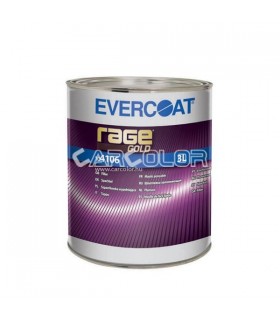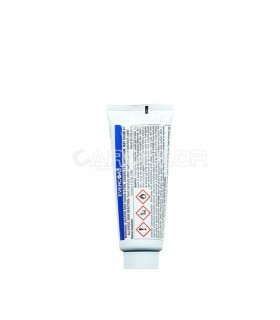Car Putty: The Secret to Perfect Bodywork Repair
Car putty is a versatile filler and smoothing compound used for repairing various damages on a vehicle’s bodywork. It’s primarily applied to fix scratches, dents, and cracks, but it also has numerous other uses in auto body restoration. The putty is easy to shape, dries quickly, and is compatible with most types of automotive paint, making it a must-have for car owners and professionals alike.
In this guide, we’ll explore everything you need to know about car putty, including its benefits, types, application techniques, and expert tips for achieving flawless repairs.
Advantages of Using Car Putty
Using car putty comes with several benefits that make it an essential product for vehicle maintenance and restoration.
1. Ideal for DIY Minor Repairs
Car putty allows you to fix minor bodywork damages at home, eliminating the need for expensive professional repairs. Whether you’re dealing with a small dent or a deep scratch, you can easily restore your car’s appearance without specialized skills.
2. Cost-Effective Solution
Compared to a full bodywork repair at an auto shop, using car putty is a budget-friendly alternative. It significantly reduces repair costs while still providing excellent results.
3. Fast and Efficient Repairs
One of the biggest advantages of car putty is how quickly it dries and cures. This means you can complete minor repairs in a matter of hours instead of waiting days or even weeks for a professional repair job.
4. Prepares the Surface for Painting
Car putty doesn’t just repair damages—it also prepares your car for painting. It fills in imperfections, smooths out uneven surfaces, and ensures that the new paint adheres properly for a professional finish.
5. Available in Different Types and Formulations
There are various types of car putty available, each designed for different repair needs. Whether you need a lightweight putty for small fixes or a heavy-duty filler for deeper dents, you can find the right product for your project.
Types of Car Putty
Understanding the different types of car putty can help you choose the best one for your repair job.
1. Polyester Putty
This is the most common type of car putty, known for its strong adhesion and easy sanding properties. It’s ideal for repairing small to medium dents and scratches.
2. Fiberglass Putty
Reinforced with fiberglass particles, this putty is used for more durable repairs, especially on rusted or weakened areas of the car body.
3. Lightweight Putty
This type of putty is easier to sand and is typically used for finishing touches or smaller repairs.
4. Heavy-Duty Putty
Designed for deeper dents and larger imperfections, heavy-duty putty offers more strength and durability than standard options.
5. Spot Putty
Used for very fine scratches, pinholes, or minor surface imperfections, spot putty is a great finishing product before painting.
How to Apply Car Putty: A Step-by-Step Guide
Step 1: Clean the Damaged Area
Before applying car putty, thoroughly clean the affected area using soap and water to remove dirt, grease, and debris. Let it dry completely.
Step 2: Sand the Surface
Use sandpaper (typically 80-120 grit) to roughen the surface. This helps the putty adhere better to the metal or painted surface.
Step 3: Mix the Putty Properly
If using a two-part putty, mix the base putty with the hardener according to the manufacturer’s instructions. This ensures the putty cures correctly.
Step 4: Apply the Putty Evenly
Use a plastic spreader or putty knife to apply the putty in thin, even layers. Avoid applying too much at once, as it may lead to cracks when drying.
Step 5: Let It Dry
Allow the putty to dry completely. Drying times vary based on the product used, but most putties cure within 30 minutes to an hour.
Step 6: Sand and Smooth the Surface
Once the putty is dry, sand it with progressively finer sandpaper (starting from 180-320 grit) until you achieve a smooth finish.
Step 7: Prime and Paint
After sanding, apply a primer to seal the surface before painting. Then, paint the area to match the car’s original color.
Expert Tips for Achieving the Best Results
✅ Use Thin Layers – Applying multiple thin layers instead of one thick layer prevents cracks and ensures better adhesion.
✅ Work in a Well-Ventilated Area – Car putty contains chemicals that can be harmful if inhaled. Always work in an open or well-ventilated space.
✅ Wear Protective Gear – Use gloves and a mask to avoid direct contact with the putty and harmful fumes.
✅ Choose the Right Sandpaper – Using the correct grit sandpaper at each stage of sanding helps achieve a smooth, professional-looking finish.
✅ Don’t Rush the Drying Process – Allow the putty to fully cure before sanding or painting to prevent future imperfections.
Common Mistakes to Avoid
❌ Skipping Surface Preparation – Failing to clean and sand the surface properly can lead to poor adhesion and weak repairs.
❌ Over-Applying Putty – Using too much putty at once can result in cracking and excessive sanding.
❌ Not Mixing the Hardener Correctly – Improperly mixed putty won’t cure correctly, leading to weak repairs.
❌ Skipping the Primer – Applying paint directly over putty without a primer can cause the paint to peel or discolor.
Frequently Asked Questions (FAQs)
1. Can I use car putty on plastic parts?
Some specialized putties are designed for plastic bumpers and trim, but standard car putty is best suited for metal surfaces.
2. How long does car putty take to dry?
Most car putties dry within 30 minutes to an hour, but it depends on the brand and environmental conditions.
3. Can I apply car putty without sanding?
No, sanding is essential for proper adhesion. Skipping this step can result in poor repairs.
4. Is car putty waterproof?
Most car putties are not fully waterproof and should be sealed with primer and paint for long-lasting protection.
5. How long does a putty repair last?
With proper application and finishing, a car putty repair can last for years without issues.
6. Can I repaint my car immediately after using putty?
It’s best to wait at least 24 hours after applying primer to ensure the surface is fully prepared for painting.
Car putty is an essential tool for anyone looking to restore their car’s appearance and protect it from further damage. Whether you’re a DIY enthusiast or a professional, choosing the right putty and following the correct application process can make a huge difference in the final result.
Don’t let minor dents and scratches take away from your car’s beauty—grab a high-quality car putty and enjoy easy, cost-effective repairs!









